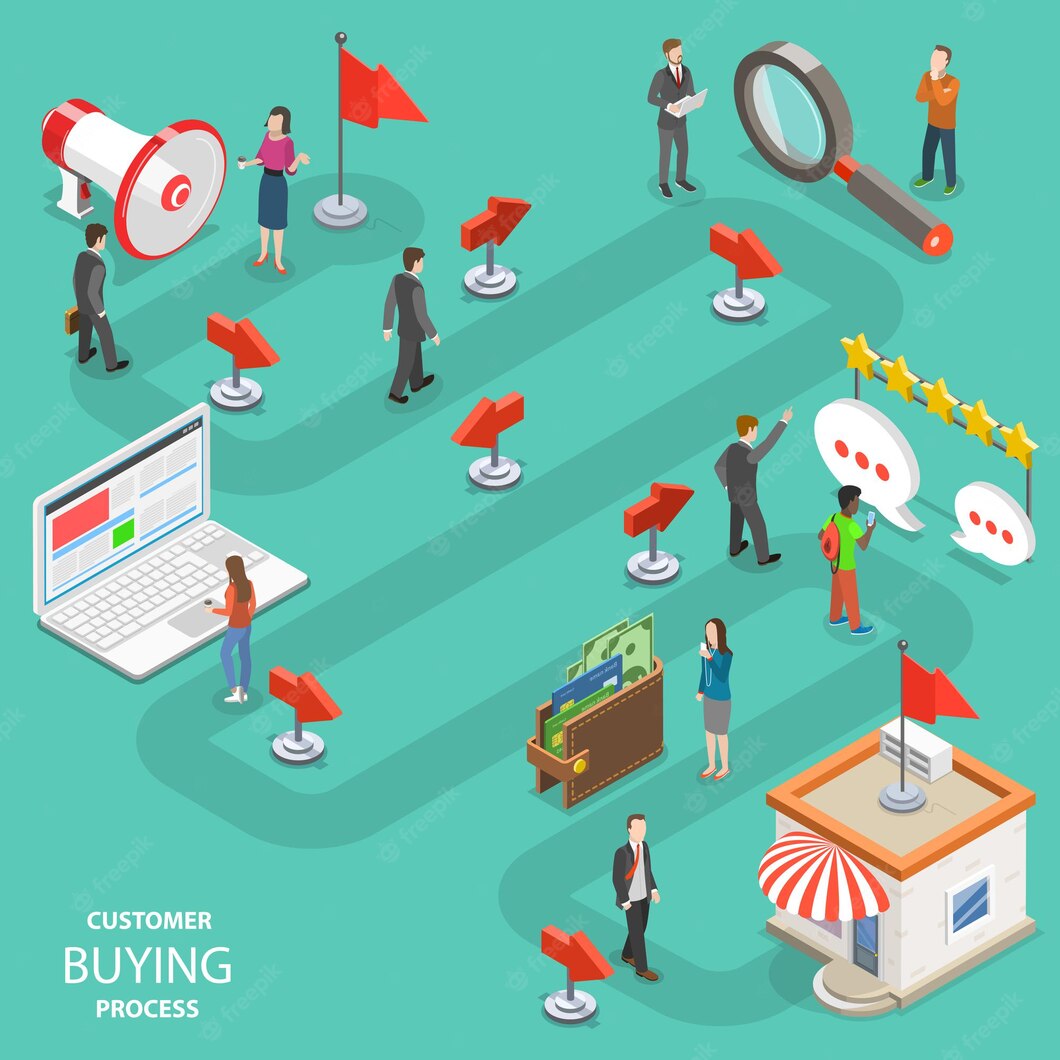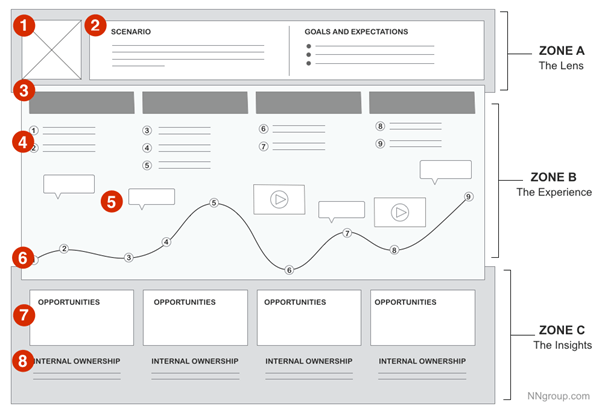Design
5
min read
What is a Customer Journey Map, what it is used for and how to create it


Don't you want to read? Try listening to the article in audio mode 🎧
Some of the fundamental questions all businesses should ask themselves are: how do users use our product? What are the actions they take before making a purchase or filling out a form? Where do most of them give up browsing or move on to something else?
Whether it is a digital company or a more traditional business, a Customer Journey mapping can be a great way to learn more about what users are doing with our product, no matter if it is a site, an app or a solution. It also helps us to know where users make their decisions, whether or not to buy our product/service.
The implementation of a tool such as the Customer (or User) Journey Map will be very useful in decision-making based on the effective use of our products by users. Such decisions are to be taken not just with regards to design and user experience but also to marketing and sales from which we can then extract valuable information about users who are actually interacting with our products.
What is a Customer Journey Map
A Customer Journey Map can be defined as the visualization of the processes that a person goes through to reach a target. In other words, the analysis represents the mapping of all the points (touchpoints) that users touch to arrive at the conclusion of a process. It will therefore be very important to define the goals that you want to examine, whether it is the purchase of a product, the completion of a contact or registration form or a request for quote. In its most basic form, the Customer Journey Map consists of compiling a series of user actions on a timeline. This temporal sequence is then increased with users’ thoughts and sentiment, in order to build a storytelling. The storytelling (or narration) is finally condensed and synthesized, leading to a visualization of the entire flow. So, basically, the Customer Journey Map is a process that shows how a user interacts with a product and allows everyone, both designers and business decision makers, to see a product from the user's point of view.What problems the use of Customer Journey Map can help solve
Now that we have defined the meaning of Customer Journey Map, let's see what are the issues and problems that this type of analysis can help solve. First of all, with the Journey Map we start from the user's point of view and this encourages a more final user-centered approach, already starting from the design phase (or redesign) of a product. Furthermore, the Customer Journey Map answers all questions such as “What if…”, which are fundamental questions for product teams, in order to make key decisions in the design and development of features. Finally, the Customer Journey Map can be helpful for keeping track of quantitative KPIs, or rather performance indicators handy for marketing and sales teams, as well as for product teams, with the aim of progress monitoring and drawing important strategic recommendations. (sources: https://www.nngroup.com/articles/customer-journey-mapping/)
(sources: https://www.nngroup.com/articles/customer-journey-mapping/)
The 8 points of the process
Before starting with the creation of a Customer Journey Map, it is important to define your business goals, so that the process will help to align your business with the user’s objectives. Let's see what are the fundamental points of a Customer Journey Map, on which to build our model. https://uxplanet.org/a-beginners-guide-to-user-journey-mapping-bd914f4c517c- Define the scope
- Create User-Personas
- Interviews with our real users
- Creation and conduction of contextual surveys
- Setting up a poll among your users and analyze the results.
- Define the scenario and Users’ expectations
- Create a touchpoint list
- Define Users’ intentions and interaction methods
- Motivation: what drives users to interact?
- Access channels: where does the interaction take place?
- Actions: the behaviors and steps taken by users
- Weaknesses: what are the obstacles that users have to overcome.
- Draw Users’ Journeys
- Consider Users' reactions for each step
- Validate and refine the Customer Journey Map
Conclusions
In conclusion, we can say that the main goal of a Customer Journey Map is to create a shared vision, not only for designers and programmers, but for all the teams that deal with that product. Through this tool we will allow everyone to look at the product from the point of view of the end user, and to use this precious information that we have obtained from all stages, which means from the creation to the promotion of the product.
Article updated on: 09 August 2023

Don't Waste Your Talent. Turn It Into a Career With a Course That Fits Your Needs!
Talent Garden is your Digital Skills Academy, offering courses in Digital Marketing, UX Design, Digital HR and Data Analysis designed to launch your career.
Keep reading

4
min read
What is a Data Warehouse and how does it support Business Intelligence?
At a time when company decisions are increasingly becoming Data Driven, it is essential to have one or more sources of ...
Talent Garden
10/06/2022

3
min read
What is the Messy Middle and how it affects the funnel and conversions
The Messy Middle: the definition according to Google The Messy Middle is a model developed and proposed by Google, ...
Talent Garden
08/03/2022

2
min read
What is the Difference between a CoWorking place and a Shared Workplace?
If you look up the definition of Coworking, it will give you the Oxford Dictionary definition saying “The use of an ...
Talent Garden
07/12/2017

4
min read
Atomic Design: what it is and why it is important in UI
The definition “design system” indicates a set of specifications that allow the creation of consistent user interfaces ...
Talent Garden
10/03/2022
